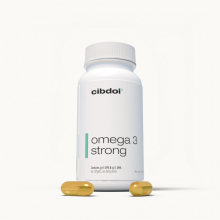Do Eggs Have More Omega-3 or Omega-6?
Published:
Eggs are one of the most nutritious foods you can eat. But when it comes to healthy fats, do eggs provide more omega-3 or omega-6 fatty acids?
Contents:
- Omega-3s and Omega-6s: Differences and Optimal Ratios
- What Influences the Omega Fatty Acid Content of Eggs?
- Omega-3 and Omega-6 Contents of Whole Raw Eggs
- Omega Fatty Acid Profile of Egg Yolks Versus Egg Whites
- Effects of Chicken Feed on Egg Omegas
- Best Cooking Methods to Preserve Omega-3s in Eggs
- Diet Tips to Balance Omega-3 and Omega-6 Intake from Eggs
- Conclusion
Understanding the omega-3 and omega-6 content of eggs is important, as these essential fats play unique roles in the body. Getting them in the optimal ratio promotes good health.
This comprehensive article reviews the evidence on the amounts and balance of omega-3 and omega-6 fatty acids in eggs. You’ll learn:

- The functions and ideal ratios of omega-3s and omega-6s
- Factors that influence the fat composition of eggs
- Specific amounts of omega-3s and omega-6s in egg yolks and whites
- How to change the omega profile of eggs through chicken feed
- Healthiest cooking methods to preserve egg omegas
- Diet tips for balancing your omega-3 and omega-6 intake
By the end, you’ll know whether eggs naturally have more omega-3 or more omega-6, and how to improve their nutritional value.
Omega-3s and Omega-6s: Differences and Optimal Ratios
omega-3 and omega-6 fatty acids are essential fats that must be obtained through the diet. Here’s an overview:
- Omega-3s have strong anti-inflammatory properties and provide many health benefits. The main omega-3s are ALA, EPA, and DHA.
- Omega-6s are pro-inflammatory in large amounts. The primary omega-6 is linoleic acid or LA.
- Historically, human diets provided a 1:1 omega-6 to omega-3 ratio. But today it averages around 10:1 to 50:1 - a major imbalance.
- A healthy target ratio is 2:1 to 4:1 omega-6 to omega-3. Getting excessive omega-6 can promote chronic inflammation when omega-3 intake is low.
So when evaluating fat sources like eggs, it’s important to consider not just the total amounts of each omega, but the ratio between them.
What Influences the Omega Fatty Acid Content of Eggs?
Several factors impact the levels and proportions of omega-3s and omega-6s found in eggs:
- Chicken breed - Some breeds produce eggs higher in omega-3s.
- Chicken diet - Eggs from pasture-raised hens eating greens contain more omega-3s than grain-fed hens.
- Enriched feed - Adding flax, chia or fish oils to feed boosts omega-3 content.
- Testing method - Measuring fatty acid profile varies across studies.
- Cooking method - Frying may lower omega-3s compared to boiling or poaching.
So the rearing conditions of chickens can significantly influence the omega-3 content of their eggs.
Omega-3 and Omega-6 Contents of Whole Raw Eggs
Here are typical amounts of omega-3s and omega-6s in a 100 gram whole raw egg (about 1 1⁄2 large eggs):
- Total fat: 9.5 grams
- Omega-3 ALA: 6 milligrams (mg)
- Omega-3 EPA/DHA: 35-40 mg
- Omega-6 LA: 910 mg
This equates to:
- 10 times more omega-6 than omega-3 ALA
- 25 times more omega-6 than omega-3 EPA/DHA
So in total, omega-6 fatty acids dominate over omega-3s in regular eggs. The ratio of omega-6 to omega-3 averages around 15:1.
Let’s look deeper at the amounts in the yolks versus egg whites.
Omega Fatty Acid Profile of Egg Yolks Versus Egg Whites
Since all the fats are found in the yolk, it’s not surprising egg whites contain negligible amounts of omega-3s or omega-6s.
For a typical large egg yolk:
- Omega-3 ALA: 14 mg
- Omega-3 EPA/DHA: 86 mg
- Omega-6 LA: 1797 mg
So the ratio of omega-6 to omega-3 remains very lopsided at over 20 times more linoleic acid in the yolk alone.
Effects of Chicken Feed on Egg Omegas
The omega imbalance found in commercial eggs is largely a result of modern poultry farming practices:
- Conventionally raised chickens are housed indoors and fed grain-based diets high in omega-6 oils.
- Their eggs become high in omega-6 compared to omega-3.
However, modifying chicken feed can alter the fatty acid composition:
- Adding flax and chia seeds elevates omega-3 ALA levels in eggs.
- Fish oil supplements raise omega-3 EPA/DHA content.
- Grass-feeding also boosts omega-3s compared to corn or soy-based feed.
Studies show omega-3 enriched eggs contain a more favorable ratio of 1.3:1 to 6:1 omega-6 to omega-3 fatty acids.
So choosing enriched or pasture-raised eggs is a good way to improve your essential fatty acid intake from this food source.
Best Cooking Methods to Preserve Omega-3s in Eggs
Cooking techniques can also impact the fatty acid profile in eggs.
Studies comparing different preparations found:
- Raw eggs retain the highest omega-3 levels.
- Boiling leads to minimal omega-3 loss.
- Frying appears to deplete omega-3s the most.
The longer cooking time and high heat of frying likely contributes to this effect.
For maximal preservation of omega-3s, enjoy eggs raw, softly boiled, poached, or prepared sous-vide. Avoid getting yolks crispy.
Diet Tips to Balance Omega-3 and Omega-6 Intake from Eggs
To balance intake from eggs and other foods:
- Choose omega-3 enriched eggs whenever possible. Look for “high omega-3” on the label.
- Incorporate fatty fish like salmon 2x a week for EPA/DHA.
- Use oils high in omega-3 ALA like flaxseed or canola oil.
- Limit processed foods fried in high omega-6 vegetable oils.
- Consider an algae oil supplement to increase daily omega-3s.
Following a varied, whole food diet with both plant and animal sources can help provide omega fatty acids in a healthier ratio.
Conclusion
In summary, regular eggs contain far greater amounts of the omega-6 fatty acid LA compared to anti-inflammatory omega-3s ALA, EPA and DHA.
On average, eggs supply a ratio of around 15:1 omega-6 to omega-3. So the fatty acid profile is significantly skewed toward omega-6.
Choosing omega-3 enriched eggs from pasture-raised chickens, and preparing them with lower heat, can improve this imbalance. Aim for a balanced ratio close to 1:1 or 2:1 through a varied, whole foods diet.
Getting enough omega-3 fatty acids from foods like oily fish, eggs, seeds, nuts and vegetable oils supports good health. Be mindful of eating quality protein sources like eggs within a well-rounded nutritional plan.















